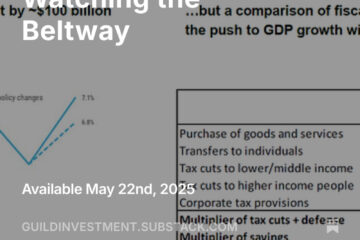Investors are Concerned About Future Fed Behavior… Especially Interest Rate Increases
We read carefully the comments by Fed vice-chairman Fischer — the eminent, wise, and experienced central banker. Mr. Fischer believes that U.S. rates will probably rise late in late 2015. Rates will rise at least partially due to the simple need to get U.S. Fed funds rates above the zero range. Once rates have risen, the Fed has another tool to use for future interventions — that is, lowering rates. We do not anticipate strong rises in U.S. rates. We expect gradual and modest increases beginning late in 2015 or early in 2016. We anticipate that we will see two or three rises of 1/4 percent each, until inflation finds itself above 2 percent for at least a few sequential calendar quarters. Then rates will rise more rapidly.
To quote Mr. Fischer: “An increase in the Federal funds range will be warranted before the end of the year… In deciding when that time has come, we will continue to monitor a wide range of information regarding labor market conditions, inflation, and financial and international developments. We anticipate that it will be appropriate to raise the target range when there has been further improvement in the labor market and we are reasonably confident that inflation will move back to our 2 percent objective over the medium term.”
Later, he talks about the path of rising interest rates and says: “But a smooth path upward in the Federal funds rate will almost certainly not be realized, because, inevitably, the economy will encounter shocks. Shocks like the unexpected decline in the price of oil, or geopolitical developments that may have major budgetary and confidence implications, or a burst of greater productivity growth, as the Fed dealt with in the mid 1990s.”
In the opinion of GIM, inflation appears as a distant threat, with the stronger dollar of recent months putting the cost of raw materials down and preventing inflationary impulses from getting a strong hold on the American psyche. U.S. employment is rising and will continue to rise; conversely, the unemployment rate is falling, and it will be allowed to fall to about 5 percent or even a bit more before the Fed will take action to slow economic growth with substantial rises in rates. U.S. wages are rising, but at a slow rate, and thus cost push inflation is not a problem. Demand for goods and services remains modest, and thus demand-pull inflation is not currently an issue. We believe that it will be early 2016 before U.S. interest rates rise.
Still later, Fischer remarks: “However, as monetary policy is normalized, interest rates will sometimes have to be increased, and sometimes decreased.” He points out that market participants will form expectations of future interest rates based upon three elements: first, the policy of the FOMC (which he points out is reactive.); second, “their analysis of current economic and financial situation and outlook”; and third, “whatever guidance the FOMC will provide as to how it sees monetary policy decisions likely to unfold given the economic situation and outlook.”
Our summary: U.S. interest rates (Fed funds rates) will rise late in 2015, but will rise slowly, and there will be plenty of dovish sentiment on the FOMC which will move to lower rates if circumstances are deemed to warrant such action.

